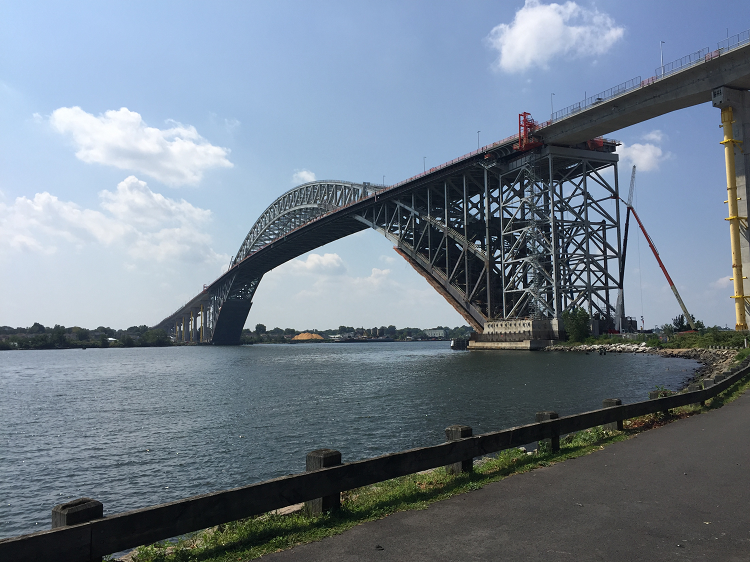Bayonne Bridge Navigational Clearance Project
Project Description
The Bayonne Bridge, the fourth longest steel arch bridge in the world, connects Bayonne, New Jersey with Staten Island, New York across the Kill Van Kull. Since being completed in 1931, it has served as an important link for commuters between New Jersey and New York on a daily basis. However, the original roadway prevents the newer and larger container ships from passing under to reach the marine terminals located in the area. In order to fix this, the Port Authority of New York & New Jersey's (PANYNJ) Bayonne Bridge Navigational Clearance Project replaces the original roadway with a new one lifted higher above the water. The project maintains the original steel arch and design, while providing a wider more modern day roadway for those traveling across it.
PANYNJ requested noise assistance from Paul Carpenter Associates, Inc. (PCA) for the construction of the project. Background noise monitoring was performed in eight locations utilizing Type 1 noise level meters. The raw data was filtered based on a three step process developed by PCA which removes noise data documented during abnormal traffic periods, adverse meteorological conditions and extraneous noise sources. The filtered noise data was averaged to create weekday and weekend noise trends for each location.
Utilizing background noise data, PCA developed project-specific noise criteria for the area. The noise specifications were complex and involved overnight noise criteria as well as additional mitigation measures. To determine whether proposed construction activities employing reasonable mitigation methods would meet noise criteria, PCA predicted construction-related noise levels utilizing the Federal Highway Administration Roadway Construction Noise Model (RCNM).
Subsequently, PCA was requested to meet with PANYNJ and environmental consultants performing the NEPA Environmental Impact Statement (EIS) for the project. PCA was requested to provide review and comments related to the construction noise analysis performed by the consultant to ensure the analysis was consistent with developed noise specifications for the project.
PCA also provided Noise Control Officers (NCO) on a daily basis to monitor construction-related noise levels to determine compliance with contract noise specifications. PCA implemented a remote noise monitoring system, utilizing six noise monitoring terminals (NMTs) streaming continuous real-time data to a project-specific compliance website accessed by authorized PANYNJ personnel, including site inspectors to ensure contractor compliance with contract noise specifications.
